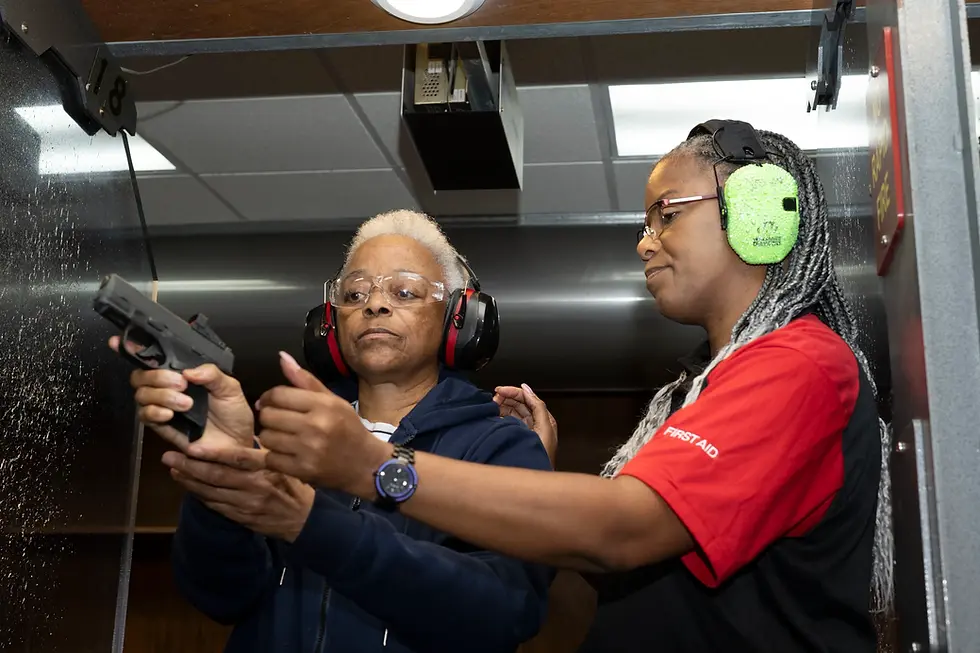Mastering Firearm Safety: A Beginner's Guide
- armsofjustice365
- Jul 1, 2025
- 3 min read
Firearm safety is a crucial topic for anyone interested in owning or using a gun. Whether you are a first-time gun owner or someone considering taking up shooting as a hobby, understanding the principles of firearm safety is essential. This guide will walk you through the fundamental rules of firearm safety, practical tips, and the importance of responsible gun ownership.
Understanding Firearm Safety
Firearm safety is not just a set of rules; it is a mindset. It involves being aware of your surroundings, understanding how firearms work, and knowing how to handle them safely. The goal is to prevent accidents and ensure that everyone around you remains safe.
The Four Fundamental Rules of Firearm Safety
Treat every firearm as if it is loaded.
This rule emphasizes the importance of always assuming that a gun is loaded, even if you believe it is not. This mindset helps prevent careless handling and potential accidents.
Never point the firearm at anything you do not intend to shoot.
Always keep the muzzle pointed in a safe direction. This means avoiding pointing the gun at people, pets, or anything you do not want to destroy.
Keep your finger off the trigger until you are ready to shoot.
This rule is vital for preventing accidental discharges. Your finger should rest outside the trigger guard until you have made the decision to fire.
Be sure of your target and what is beyond it.
Before firing, ensure you know what you are aiming at and what lies behind it. Bullets can travel through targets and hit unintended objects or people.
The Importance of Education and Training
Education and training are key components of firearm safety. Taking a firearm safety course can provide you with the knowledge and skills needed to handle a gun responsibly. Many organizations offer courses that cover everything from basic handling to advanced shooting techniques.
Finding a Course
When looking for a firearm safety course, consider the following:
Reputation: Look for courses offered by reputable organizations or certified instructors.
Content: Ensure the course covers the fundamentals of firearm safety, handling, and storage.
Hands-On Training: Practical experience is essential. Choose a course that includes live-fire exercises.
Safe Storage Practices
Proper storage of firearms is crucial for preventing unauthorized access and accidents. Here are some tips for safe storage:
Use a Gun Safe: Invest in a quality gun safe that is secure and accessible only to you.
Lock Up Ammunition: Store ammunition separately from firearms to reduce the risk of accidental discharge.
Educate Family Members: Make sure everyone in your household understands the importance of firearm safety and knows where firearms are stored.
Practical Tips for Safe Handling
Handling firearms safely requires practice and mindfulness. Here are some practical tips to keep in mind:
Always Wear Eye and Ear Protection
When shooting, always wear appropriate eye and ear protection. This helps prevent injuries from flying debris and loud noises.
Inspect Your Firearm Regularly
Before using your firearm, inspect it for any signs of damage or malfunction. Ensure that it is clean and functioning properly.
Practice Regularly
Regular practice helps improve your shooting skills and reinforces safe handling habits. Consider joining a local shooting range to gain experience in a controlled environment.
Know Your Firearm
Familiarize yourself with the specific firearm you own or plan to use. Read the owner’s manual and understand how it operates, including how to load, unload, and clear malfunctions.
The Role of Responsible Gun Ownership
Owning a firearm comes with significant responsibilities. As a gun owner, you must commit to being a responsible and informed individual. This includes:
Staying Informed: Keep up with local laws and regulations regarding firearm ownership and use.
Advocating for Safety: Encourage others to prioritize firearm safety and education.
Being a Role Model: Set a positive example for others by demonstrating safe handling and storage practices.
Community Involvement
Consider getting involved in your local shooting community. Many organizations promote firearm safety and education. Participating in events or volunteering can help spread awareness and foster a culture of safety.
The Impact of Firearm Safety on Society
Firearm safety is not just an individual concern; it affects the entire community. By prioritizing safety, we can reduce accidents and promote responsible gun ownership. This, in turn, helps create a safer environment for everyone.
The Importance of Advocacy
Advocating for firearm safety can take many forms. You can support local initiatives, participate in safety programs, or even engage in discussions about responsible gun ownership. Every effort counts in promoting a culture of safety.
Conclusion: Embracing a Culture of Safety
Mastering firearm safety is an ongoing journey. By understanding the fundamental rules, seeking education, and practicing responsible ownership, you can contribute to a safer community. Remember, safety is not just a set of rules; it is a way of life. Embrace it, share it, and let it guide your actions as a responsible gun owner.








Comments